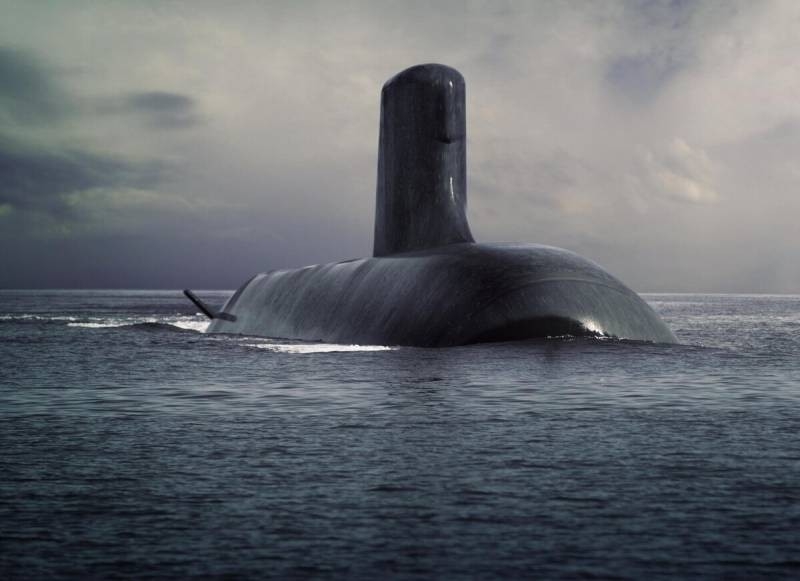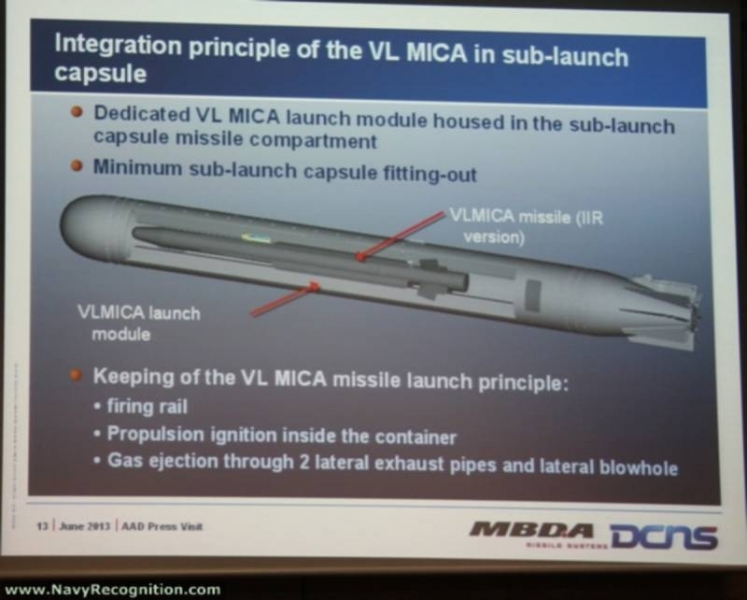As is known, held 12 July 2019 2009, the solemn ceremony of launching the head multi-purpose nuclear submarine of the 4th generation "Suffren" of the class "Barracuda SNA" was presented by the central French media and highly specialized Western European military-analytical publications as the most significant event in the modern history of the military-industrial complex and the Naval French forces.

Without delving into already known technical characteristics, design features, as well as the range of tasks assigned to the "Barracuda", could come to the conclusion, that descended from the stocks of the corporation "Naval Group" (DCNS) the attack nuclear-powered ship "Suffren" is a "ordinary" conceptual analogue of the Russian MAPL pr. 885/M "Ash / -M" and American "Virginia", and a surge of media pathos was provoked by exceptionally beautiful statements, by President Emmanuel Macron and Chief of Staff of the French Navy Admiral Christophe Prazuc, participating in the event.
MAPL "Suffren" - a reference sample of Western submarine shipbuilding
We decided to get away from the erroneous practice of a superficial assessment of the combat capabilities of one or another model of promising military equipment and plunged headlong into a scrupulous study of technical parameters, hull layout, power plant architecture, as well as the ammunition load of submarines of this series.
As a result, a thorough analysis of foreign and domestic reference publications, publishing information about the Barracuda project since the second half of the 2000s., led us to a very unexpected result, able to puzzle not only regulars of military-analytical blogs, but also real experts in the field of naval technology and anti-submarine weapons. As time has shown, significant "slipping" of the implementation of the project "Barracuda" (about 11,5 years) only played into the hands of DCNS specialists, who managed to carefully consider all technical problems, arising during the operation of the American and British MAPL "Virginia" and "Estyut", and then eliminate the probable causes of their occurrence during the construction of the lead nuclear-powered ship "Suffren".
One of these problems can be considered the "childhood disease" of the American multi-purpose nuclear submarines of the "Virginia" class in the "Block I / II" versions., which consisted in peeling segments of the sound-absorbing coating from the body (due to the decrease in the tenacity of the adhesive under the influence of sea water), which ultimately led to a significant increase in the acoustic signature of submarines, and therefore, and the range of their direction finding by means of sonar buoys and enemy sonar. In combat conditions (at the ocean theater) such a technological "gap" can lead to the "collapse" of the echeloned anti-submarine and anti-ship zones "A2 / AD", formed around the US Navy AUG. obviously, that during the installation of sound-absorbing elements ("echoless") coating on the head MAPL "Suffren" a more advanced version of waterproof glue was used, which could be used on strategic missile submarines "Le Triomphant". As is known, the latter did not encounter the above-described "childhood illness".
However, implementation of the highest level of acoustic secrecy of the submarine "Suffren" and its "sisterships" under construction (at or above, than MAPL pr.885, "Virginia" and "Estiute") due not only to the use of segments of a high-performance "anechoic" coating on a high-quality adhesive basis, but also in terms of weight and size, as well as the configuration of the controls and the design of the propellers. So, submarines of the class "Barracuda" boast an underwater displacement of only 5300 t (versus 13800 t at "Ash") and body width 8,8 m.

Members of armed groups awaiting tourists in Tunisia
These indicators in combination with a water jet propulsion (absent on the "early" MAPL pr. 885), reducing perturbations of the water column from the cavitation effect, compact felling, "seamlessly integrated" into the chassis architecture, X-tail, as well as a single power unit (steam generators are combined into a single module with a pressurized water reactor K-15, placed on a multi-tier shock-absorbing platform), will allow to achieve a reduction in the level of acoustic noise "Barracuda" to 45-50 dB in the "sneaking" mode, which will only slightly exceed the performance of modern diesel-electric submarines / diesel-electric submarines (including anaerobic Soryu, Type 212A, etc.). Furthermore, X-shaped configuration of placement of stern stabilizers and rudders, not rising above the upper generatrix of the body, will help to reduce the effective scattering surface of the Barracuda class submarines in the surface mode, due to which the range of their detection by means of airborne search and targeting radars of enemy anti-submarine aircraft will noticeably decrease.
"Underwater predator" with anti-aircraft potential
Meanwhile, this is not the whole list of "trump cards" of nuclear submarines of this family.. In addition to the software and hardware adaptation of the combat information and control systems of submarines to the use of advanced F21 Artemis heavy torpedoes and long-range tactical missiles SCALP Naval / MDCN», "Equipment" "Barracuda" will be replenished with a unique underwater self-defense air defense system A3SM, developed by a joint division of MBDA and DCNS concerns. A key element of the A3SM complex (Anti-Aircraft Weapon for Submarines) is an "anti-aircraft" modification of the medium-range air combat missile MICA-IR (with dual-band infrared homing head: 3-5 um and 8-12 µm respectively), placed in a protective launch capsule, submarine launched from 533-mm torpedo tubes.

Configuration of the VL MICA-IR anti-aircraft guided missile in the launch capsule, adapted for use from 533-mm TA
Already in the foreseeable future, the underwater version of the launch of VL MICA-IR missiles in the A3SM version can be considered an extremely “alarm bell” not only for the crews of anti-submarine helicopters and Il-38N aircraft, carrying out hydroacoustic reconnaissance and monitoring of the surface situation in the most dangerous areas of the theater of operations, but also for the flight personnel of tactical aviation, involved in gaining air supremacy or air patrols on the distant approaches to the A2 / AD zones of the Russian Aerospace Forces. And there is no exaggeration here, after all, the underwater launch of these missiles can be carried out completely unexpectedly for the crews of aircraft-potential targets, while it is impossible to fix the work of the infrared seeker with the help of standard means of warning about exposure or RTR stations, and optoelectronic stations for detecting attacking missiles (by IR radiation from engine flames) far from being installed on all types of aircraft of naval aviation or the Russian Aerospace Forces.
And even in the event of timely detection of the fact of the MICA-IR missile leaving the depths of the sea, it will be extremely difficult to avoid interception. Why? At first, because, that the modern dual-spectrum matrix photodetector of the MICA-IR rocket has excellent noise immunity with the ability to select a real target against the background of a “swarm” of heat traps and even optoelectronic countermeasures. Secondly, in connection with the possibility of obtaining repeated target designation / correction (in case of failure of the "capture") from remote AWACS aircraft and airborne radars of Western fighters via the Link-16 radio channel (the participation of the carrier submarine in this case is not required). Thirdly, in connection with the highest maneuverability of the MICA family missiles, which is achieved due to the use of the OBT gas-jet system during the burn-out period of the solid propellant charge of the engine (at this stage, available MICA-IR/EM overloads can reach up to 55 u).
Salvation from such an insidious tactic of using the A3SM submarine-based defensive complex can only be flights at altitudes above 10 km, outside the high-altitude ceiling of the destruction of missiles of the MICA family in the "anti-aircraft" version. Unfortunately, in conditions of high-intensity hostilities in the sea / ocean theater of operations, it is hardly possible to foresee the above points, as well as effectively suppress underwater communication channels, through which target designation can be transmitted for operators of the A3SM complex.
Eugene Damantsev











